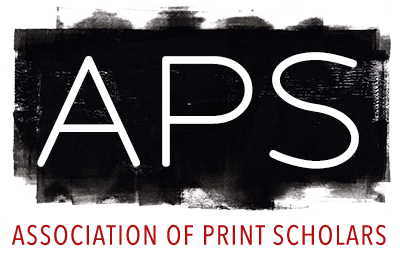Call for Papers or Proposals
Posted: 10/10/2022
Posted by: Association of Print Scholars
Expires: 10/24/2022
Print Albums: From Artistic Collaboration to Geo-political Ramifications
American Society of Eighteenth-Century Studies
St. Louis,
MO, United States
Abstracts due: 10/24/2022
Conference date: 03/09/2023
CFP | ASECS 2023 | St. Louis, MO (March 9 -11, 2023)
Session 84 | Print Albums: From Artistic Collaboration to Geo-political Ramifications, Susanne Anderson-Riedel, University of New Mexico, ariedel@unm.edu
Print albums and printed and bound gallery collections are among the most prestigious and valuable graphic productions from the 17th to the early 19th century, before they were replaced by reproductive photo albums. Publishing print albums raised the reputation of art collections, collectors, artists, and publishers alike, whether the publications focused on individual artists (such as the “Recueil Julienne,” publishing Watteau’s paintings and drawings in prints) or on entire collections (such as the print folios “Le Cabinet du Roy,” “La Galerie de Florence,” “Shakespeare Gallery,” “Le Pitture Antiche d’Ercolano,” et.al). Print albums posed new and innovative questions for their time. They competed with older publications in terms of content and technique. They played a significant role in cultural politics. Not only did print albums contribute to making the reproduced artworks known beyond the region, but the prints contributed to the arts’ global visibility due to their multiplicity and wide dissemination. Thus, they shaped the teaching at art academies and applied arts schools worldwide, forming the first canon of European vs non-European art. From the perspective of their audiences, print albums influenced tastes, shaped artistic perceptions and expectations, and constructed cultural cognition. From the viewpoint of the producing artists (draughtsmen and engravers), authors, publishers, and editors, the collaborative print publications allowed for intense professional networking. We invite scholarship on the production, collaboration, dissemination, and the market of print albums and/or art books during the long 18th century, along with inquiries on theoretical frameworks that scholarship applies to understand the cultural, trans-regional, and geo-political ramifications of print publications.
Please find the full list of sessions and the abstract submission form at the link below.
Session 84 | Print Albums: From Artistic Collaboration to Geo-political Ramifications, Susanne Anderson-Riedel, University of New Mexico, ariedel@unm.edu
Print albums and printed and bound gallery collections are among the most prestigious and valuable graphic productions from the 17th to the early 19th century, before they were replaced by reproductive photo albums. Publishing print albums raised the reputation of art collections, collectors, artists, and publishers alike, whether the publications focused on individual artists (such as the “Recueil Julienne,” publishing Watteau’s paintings and drawings in prints) or on entire collections (such as the print folios “Le Cabinet du Roy,” “La Galerie de Florence,” “Shakespeare Gallery,” “Le Pitture Antiche d’Ercolano,” et.al). Print albums posed new and innovative questions for their time. They competed with older publications in terms of content and technique. They played a significant role in cultural politics. Not only did print albums contribute to making the reproduced artworks known beyond the region, but the prints contributed to the arts’ global visibility due to their multiplicity and wide dissemination. Thus, they shaped the teaching at art academies and applied arts schools worldwide, forming the first canon of European vs non-European art. From the perspective of their audiences, print albums influenced tastes, shaped artistic perceptions and expectations, and constructed cultural cognition. From the viewpoint of the producing artists (draughtsmen and engravers), authors, publishers, and editors, the collaborative print publications allowed for intense professional networking. We invite scholarship on the production, collaboration, dissemination, and the market of print albums and/or art books during the long 18th century, along with inquiries on theoretical frameworks that scholarship applies to understand the cultural, trans-regional, and geo-political ramifications of print publications.
Please find the full list of sessions and the abstract submission form at the link below.
Relevant research areas: North America, South America, Western Europe, Eastern Europe, South Asia, East Asia, Africa, Australia, Middle East
